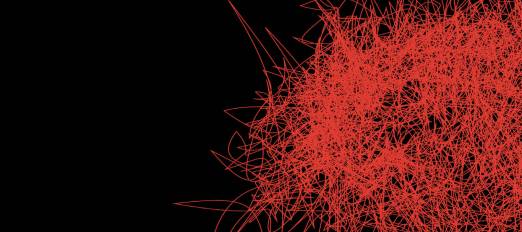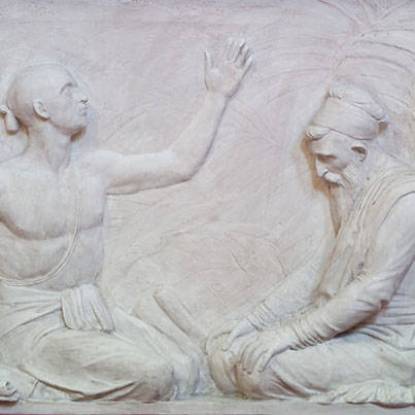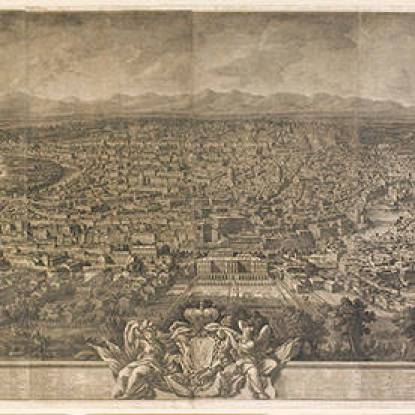The Lord's Prayer: Deliver us from evil
This plaster model is a monument to the Baring family (1806-13) and was created by John Flaxman (1755-1826).
A believer that angels safeguard the individual, Flaxman shows two angels rescuing a man from the clutches of serpents and falling demons.
Angels in the Graveyard: Flaxman and religion
Some of Flaxman’s work can be deeply moving, private and intensely religious. William Blake wrote, ‘When… Mr. Flaxman does any of his fine things he does them in the spirit.”
The dominance of the Neo-Classical style in his work meant that while Flaxman regularly referred to Greek and Roman gods and other classical figures, he rarely used Christian imagery.
Although he never left the Anglican Church, Flaxman did align himself with the Swedenborgian spiritual philosophy and against the rationalism and ‘de-mystifying’ which dominated practice in the Anglican Church at the time. Flaxman was an early member of London’s first Swedenborgian group in 1784. He became a committed participant of the Swedenborgian New Church in 1794 on his return from Italy, and sat on the committee for two years. Flaxman was recognised as a man of strong religious beliefs and his adherence to the Swedenborgian movement coloured much of his imagery.
Angels were often depicted in late 18th-century images of death. The implications for Flaxman’s monuments, keeping his Swedenborgian beliefs in mind, is that these are not only testaments to the virtuous lives, but also representations of the deceased carrying out their eternal purpose as angels themselves within the spiritual universe, guarding and guiding people still in the world. Flaxman's popularity as a sculptor resulted in a wide proliferation of funerary monuments with angelic forms.
Emanuel Swedenborg (1688-1772)
Swedenborg was a Swedish philosopher and theologian who spent his first half century as an inventor and scientist. In 1744 he claimed to have had a spiritual awakening in which God charged him to reform Christianity. In order to do this, God allowed Swedenborg unique access to the workings of the universe. This included the ability to travel between heaven, hell and the planets and to speak to angels, demons and spirits.
Tenets of the transcendental philosophy Swedenborg developed included the idea that the Last Judgement and Second Coming of Christ had already occurred and had been solely viewed by himself, and that the Holy Trinity was not three separate beings but inherent in the single being of Jesus Christ. He also purported that a person’s actions, rather than their faith alone, will be the measure of their salvation.
Swedenborg’s influence ranged across the whole cultural sphere from literature to art, philosophy and psychology. The list of luminaries he influenced includes William Blake, Arthur Conan Doyle, W.B. Yeats, Baudelaire, Ralph Waldo Emerson, Henry James, Carl Jung and Immanuel Kant.
Visit Emmanuel Swedenborg's Wikipedia page.
 Close
Close




